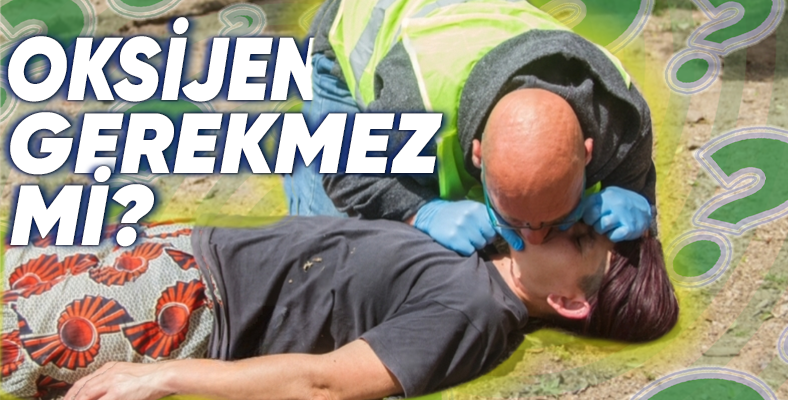Have you ever wondered how we save a patient’s life by releasing carbon dioxide into him through artificial respiration? While we should normally breathe oxygen, which is one of the basic elements of human life, into the patient, we seem to be doing the opposite.
We all know the basic needs of human life. The greatest need, as you know, is oxygen gas. Let us remind you again that when we breathe, we breathe in oxygen and give out carbon dioxide gas.
So let’s get to the real question; If our body expels carbon dioxide when we exhale, how come? artificial respiration Helping save a person’s life?
First of all, let’s start by explaining what artificial respiration is and how it is done. After all, learning this first aid is vitally important.
Artificial respiration, after the heart or breathing of the sick person has stopped, It is an oral first aid emergency response technique. The purpose of this first aid is, predictably, to resuscitate the sick person.
Of course, first aid techniques are not limited to artificial respiration; If the patient’s heart has stopped, performing heart massage along with artificial respiration is also vitally important. So, how is artificial respiration done?
- First, the sick person His pulse is counted and his mouth is opened. Then, it is checked whether there is a foreign object. If there is a foreign object, the patient is laid on the right side and the foreign object is removed with the help of the index finger.
- The patient is laid on a flat surface and the patient is placed on the right side. holding the patient’s neck is removed.
- After holding your neck airway is opened and is kept fixed in this position.
- Both nostrils of the patient are closed with the help of the left hand. Then the patient with your mouth touching his mouth A strong breath is given.
- This process repeated at least 15 times It can be done depending on whether the patient’s chest is swollen and whether he or she is breathing.
Now that we have this information, let’s explain to you the answer to the question.
The breath we inhale contains only 21% oxygen.
when we breathe Not only oxygen fills us, At the same time, we fill ourselves with 78% nitrogen, 21% oxygen and 0.04% carbon dioxide. However, when we exhale that air, we release 78% nitrogen, approximately 15% oxygen and 5% carbon dioxide. So on your own barely breathing Or we fill approximately 15% oxygen into a patient who cannot breathe at all.
This, of course, is quite different from the breathing that the patient can or cannot breathe on his own. It will be a sufficient level. Even though we fill the patient with 5% carbon dioxide, this is only done after the patient wakes up. feeling a little sleepy This means that as long as carbon dioxide is not above 8%, it poses almost no danger.
We end our information session by saying that we hope you will never have to use this information at any time in your life. If you have ever provided artificial respiration or heart massage to any living creature, we would love for you to share your experiences with our readers and us! See you in the comments…
RELATED NEWS
10 First Aid Techniques You Can Apply in Emergency Situations
RELATED NEWS
What is MCHC, which ensures the healthy maintenance of oxygen flow in our body, and what does its high and low levels mean?
RELATED NEWS
What would happen if oxygen disappeared throughout the world for 5 seconds?
RELATED NEWS
